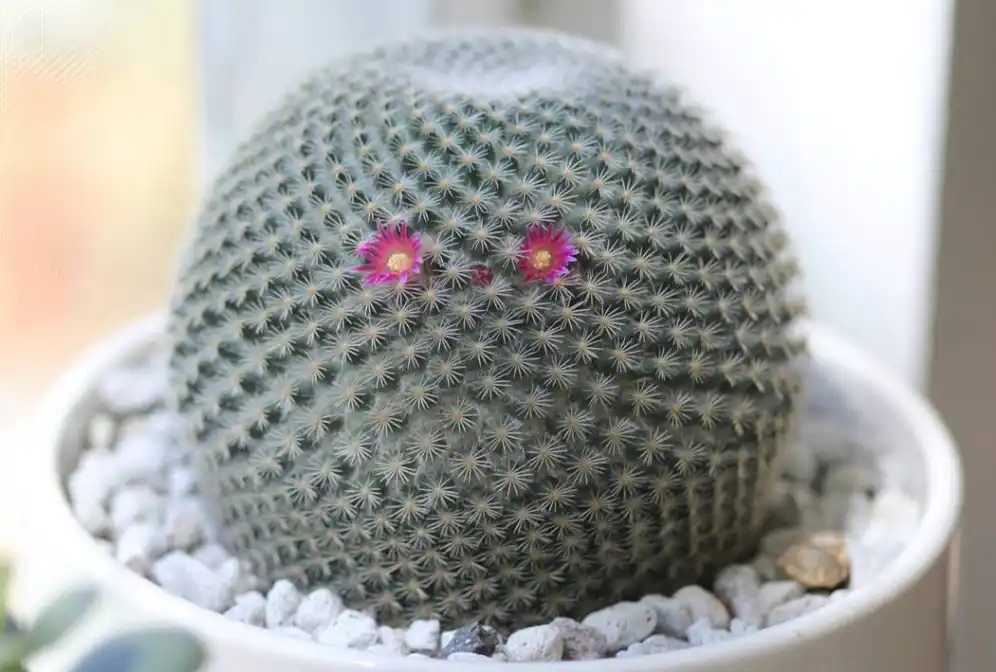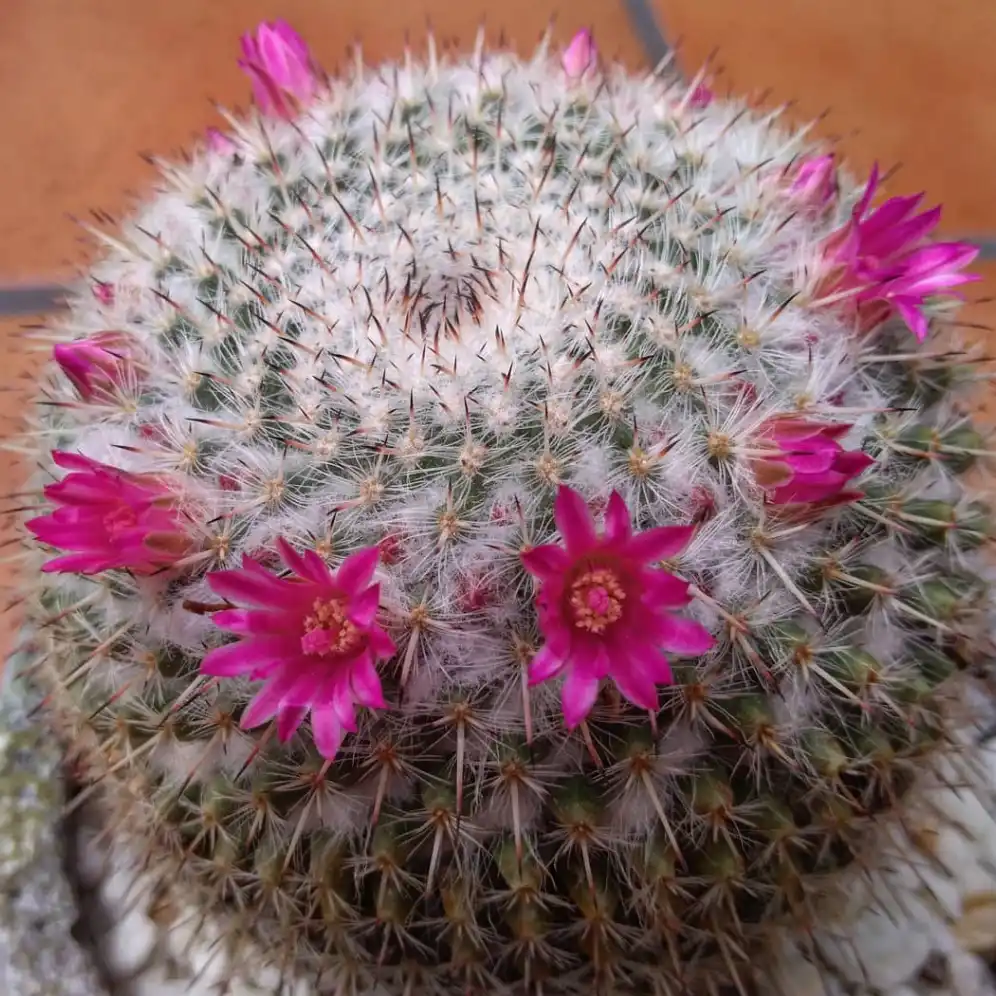In this comprehensive care guide, we’ll introduce you to the Mammillaria elegans cactus and provide expert tips on how to keep it happy and healthy. By the end of this article, you’ll feel confident in your ability to care for this beautiful succulent.
Dig in!
Overview of Mammillaria elegans
Appearance
The Mammillaria elegans cactus is a visually striking plant known for its dense clusters of cylindrical stems covered in white wool and spines. It boasts lovely pink or red flowers that bloom in a circular pattern around the top of the stem. This cactus is a member of the Mammillaria genus, which contains over 200 species and is known for its distinctive tubercles (or nipple-like projections) from which the spines emerge.
Size and growth rate
Mammillaria elegans typically grows to a height of 4 to 6 inches and has a relatively slow growth rate. It may take several years for a young plant to reach its mature size, but its captivating appearance makes the wait worthwhile!

Natural habitat and unique adaptations
This cactus is native to the high mountain regions of Mexico, where it can be found growing at elevations of 5,000 to 9,000 feet. It has adapted to life in these harsh environments with its ability to store water in its fleshy stems, allowing it to survive long periods of drought.
Caring for Mammillaria elegans
Watering
Like other succulents, Mammillaria elegans prefers a well-draining soil mix and should be watered sparingly. Overwatering is one of the most common causes of problems with this cactus, so it’s essential to let the soil dry out completely between waterings. During the growing season (spring and summer), water your Mammillaria elegans once every 2 to 3 weeks. In the fall and winter, reduce the frequency to once every 4 to 6 weeks.
When you’re rooting or transplanting your succulents and cacti, use SUPERthrive to help reduce the chance of transplant shock and grow a strong root system.
Lighting
Mammillaria elegans thrives in bright, indirect sunlight. Too much direct sun can cause the plant to become sunburned, while insufficient light can result in slow growth and poor flowering. Aim for around 6 to 8 hours of bright, indirect light per day for optimal growth.

Temperature and cold hardiness
It can tolerate temperatures as low as 25°F (-4°C), but it’s best to keep it in an environment with temperatures between 50°F (10°C) and 85°F (29°C) for optimal growth. If you live in a region with cold winters, it’s essential to bring your cactus indoors or provide protection from frost.
Fertilizing
To encourage healthy growth and flowering, apply a balanced, water-soluble fertilizer diluted to half strength once every 4 to 6 weeks during the growing season. Avoid fertilizing during the plant’s dormant period in the fall and winter.

Succulent fertilizer available to purchase on Etsy.
Pruning and dormancy
It doesn’t require regular pruning, but you can remove any dead or damaged stems to maintain its appearance. This cactus enters a period of dormancy during the cooler months, so it’s important to reduce watering and refrain from fertilizing during this time.
Growing indoors
Yes, you can grow Mammillaria elegans indoors! Just be sure to provide it with plenty of bright, indirect light and follow the care guidelines mentioned above.
Propagation
Mammillaria elegans can be easily propagated by separating offsets (or “pups”) that form at the base of the parent plant. Gently remove the offset using a clean, sharp knife, allow the cut surface to dry for a fewdays, and then plant it in a well-draining soil mix. Water sparingly until the new plant becomes established.
Common problems and pests
Some common issues that may arise when caring for Mammillaria elegans include overwatering, root rot, and infestations of pests like mealybugs or spider mites. To prevent these problems, ensure proper watering practices, provide adequate air circulation, and keep an eye out for any signs of pests.
As an Amazon Associate I earn from qualifying purchases at no additional cost to you.
Fix the pest problem on your succulents and cacti with these popular insecticides.
Safety concerns
Mammillaria elegans is not considered toxic to cats, dogs, or humans. However, its sharp spines can cause injury, so it’s essential to keep the plant out of reach of curious pets and children.
FAQs
What season does Mammillaria elegans grow?
This cactus experiences active growth during the spring and summer months, with a period of dormancy in the fall and winter.
Can I leave my Mammillaria elegans outside in the rain?
As long as the soil is well-draining and the plant is not left in standing water, it can handle some rain. However, it’s essential to protect the cactus from excessive moisture, as overwatering can lead to root rot and other problems.
How do you know if a Mammillaria elegans is dormant?
During dormancy, Mammillaria elegans will experience slower growth and may not produce new flowers or offsets. This typically occurs during the fall and winter months when temperatures are cooler and daylight is shorter.
In conclusion, the Mammillaria elegans cactus is a captivating addition to any succulent collection, with its striking appearance and charming flowers. By following the care guidelines outlined in this comprehensive guide, you’ll be well on your way to nurturing a healthy, thriving plant. Whether you’re a succulent newbie or a seasoned hobbyist, the Mammillaria elegans is sure to bring a touch of beauty and intrigue to your garden or indoor space.





